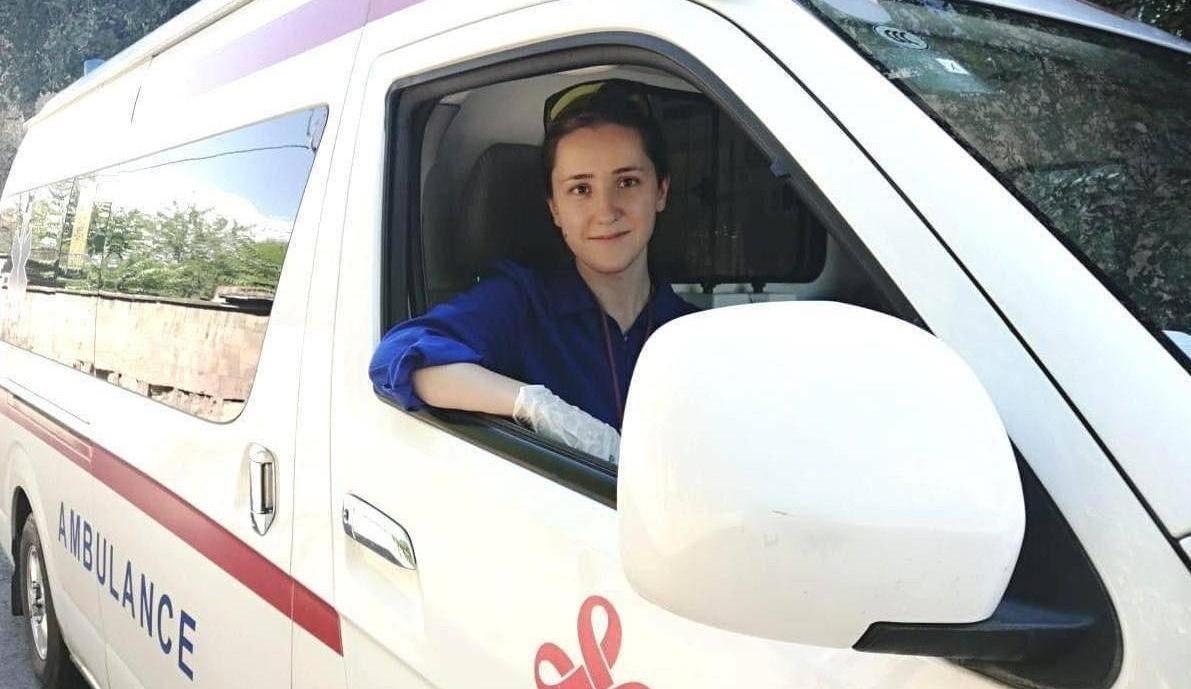
Yerevan Ambulance Physician Mariam Khachatryan Volunteered During 2020 Artsakh War: “I tried to ease their pain”
Mariam Khachatryan worked as an ambulance physician in Yerevan’s Shengavit District when Azerbaijan attacked Artsakh in the fall of 2020.
The war took her friend, Dr. Davit Hakobyan, who was serving as a military physician.
Mariam, a third-year neurology student auditing at Yerevan Medical University, started working with the ambulance team when Covid-19 hit the country in May 2020.
Khachatryan heard that the war broke out early on September 27. She had one thing on her mind – to go to Artsakh and help.
“I had no other option. I knew that Davit was in Artsakh. My place was to be alongside him. No one forced me to go,” Mariam tells Hetq.
The men of the Shegavit ambulance team volunteered to work in Artsakh and assist local first aid workers on the frontline. The women contacted their office, requesting the be allowed to go as well. Mariam received permission in early October to go with the Shengavit ambulance team to Artsakh.
Mariam told her family that she was going to Goris, a town in Armenia’s southern Syunik Province, to help transport those wounded in Artsakh to medical centers in Yerevan.
During the war, the team went to Goris and Stepanakert to transport the wounded to hospitals in Yerevan.
On October 9, the Shengavit ambulance crew had travelled to Hadrut but didn’t enter the town. They stayed in the nearby village of Togh. Soon afterwards, the bombing started. Azerbaijani troops were using UAVs.
The crew provided first aid to the wounded in the art school, converted into a makeshift field hospital.
Mariam says the wounded were arriving without stop and the doctors couldn’t even administer basic first aid. The Shengavitambulance team got to work that same day, working alongside the Togh doctors.
The team worked in shifts, making every effort to get as many wounded as possible to safety and treatment.
“There was a patient with phosphorus wounds at the Stepanakert hospital. It was as if the whole body was melting. The burns were deep. He was the younger of two brothers. The elder onehad shell fragment wounds. But the younger one kept asking how his brother was doing,” says Mariam.
She adds that the team was in constant danger when on the road transporting the wounded.
"We were in harm’s way. It was difficult. There were seriously injured. There were young men who didn’t utter a word all the way, and there were those who spoke incessantly. They spoke about their dead friends,” says Mariam, adding that all she thought about was trying to ease their pain. She had no time to even think about her own safety.
Mariam never got to see her friend Dr. Hakobyan in Artsakh.
The last time she was in Goris was on October 25. She returned to Yerevan on a shift change and was told of her friend’s death.
 Videos
Videos Photos
Photos

Write a comment